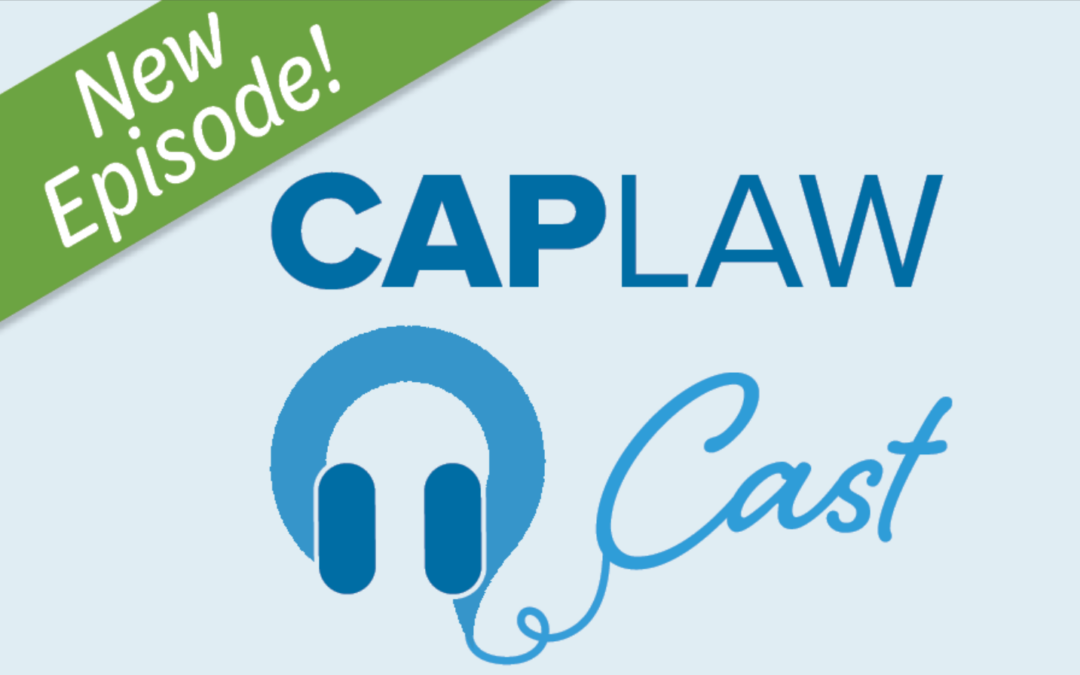Resource Library
All of CAPLAW’s resources and publications are now available in CAPLAW’s new Resource Library. Use the search filters below to find the resource you need.
Featured Resources

Bylaws Toolkit
This updated Bylaws Toolkit will help CAAs develop bylaws that are clear, effective, and up-to-date. The toolkit outlines key concepts for an agency’s bylaws, such as the authority of the Board of...

Uniform Guidance Crosswalk
This Crosswalk focuses on key substantive changes made in 2024 to the Uniform Administrative Requirements, Cost Principles, and Audit Requirements for Federal Awards, 2 CFR Part 200 (Uniform...

Dynamic Duos Podcast
Mutual respect and trust between leaders at a Community Action Agency (CAA) is essential to the stability of the organization. Without a strong relationship between a CAA board chair and executive...

Understanding Advocacy and Lobbying Rules
This webinar focuses on advocacy and lobbying and addresses questions such as:What is the difference between lobbying, advocacy, and education?What kinds of activities are considered lobbying, and what are not?How do we lobby while staying within Internal Revenue Service and federal grant...

Congress Expands Federal Whistleblower Protections
On December 14, 2016, Congress enacted Public Law 114-261, which made permanent a federal pilot program to enhance whistleblower protections for employees of federal contractors and grantees. This often-overlooked law, codified at 41 U.S.C. § 4712, has important ramifications for recipients of...

Navigating Retirement Plan Fiduciary Rules and Plan Errors
In the second webinar of the Keeping Your Organization's Retirement Plan in Shape webinar series, a seasoned retirement plan attorney covers what your organization must do to fulfill the fiduciary responsibilities of a plan sponsor under the Employee Retirement Income Security Act (ERISA), and the...

Ins and Outs of Retirement Plan Audits
In the first webinar of the Keeping Your Organization's Retirement Plan in Shape webinar series, learn from an experienced retirement plan auditor about which retirement plans are required to have audits, what auditors look at when conducting an audit, how to prepare for the efficient completion...

Case Study: Pace CAA’s Social Enterprises
How did a nonprofit Community Action Agency come to operate for-profit businesses? This case study examines how a nonprofit CAA leveraged its experience to establish social enterprises focused on helping individuals reach self-sufficiency, offering lessons in the common legal, governance, and...

The Power of a Public CAA Tripartite Board
This case study focuses on how the tripartite board of a public Community Action Agency (CAA) fulfills its responsibilities with respect to the Community Services Block Grant (CSBG) Organizational Standards (Standards) set forth in the federal Office of Community Services’ (OCS) Information...

Working with Attorneys
An attorney plays a key role in helping a CAA maintain accountability and avoid liability. By proactively working with an attorney to ensure that its organizational infrastructure is legally compliant and enforceable, a CAA may avoid costly litigation and the negative press and low employee morale...

Tips for Attorneys Reviewing CAA Bylaws
In this webinar, we examine the main issues for an attorney to consider when asked by a CAA to review and update its bylaws. We discuss laws specifically applicable to a CAA’s bylaws, such as the CSBG and Head Start board composition requirements, and what provisions the bylaws should contain to...

Taking Care of Business…and Working Overtime
The U.S. Department of Labor recently issued its long-anticipated “overtime rule,” which affects whether certain employees may be treated as exempt from the minimum wage and overtime pay requirements of the federal Fair Labor Standards Act. The DOL estimates that the new overtime rule, which will...
